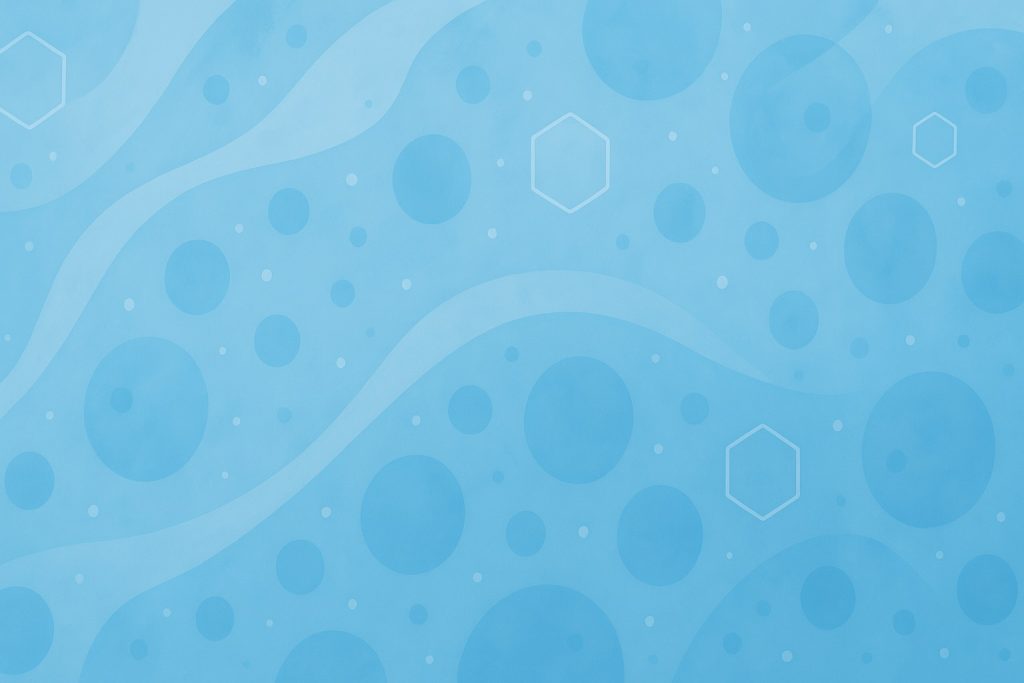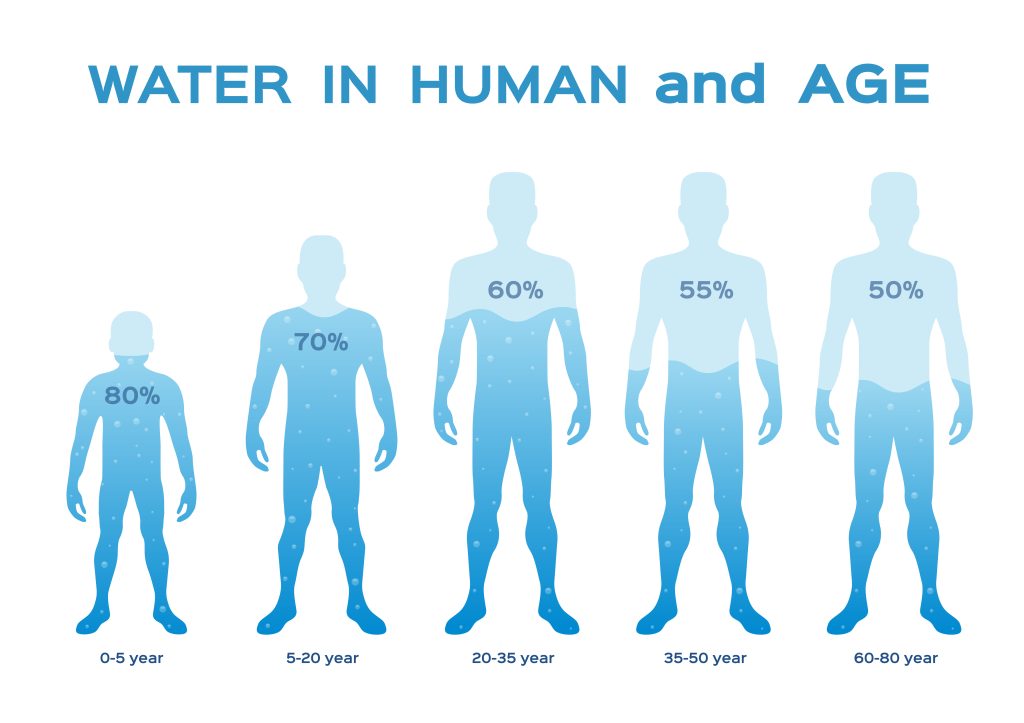💡 Introduction
The human body is not a static structure – it is a constantly renewing symphony of biology, physics and information. Every cell, every tissue has its own regenerative clock. On average:
- 🩸 Blood is renewed every six months,
- 🫁 Lungs – every 12 months,
- 🧠 Brain – every 3 years,
- 🦴 Skeleton – in 10 years,
- 🧬 Muscles and tissues – up to 15 years,
- 🧍♀️ Skin – every 3 months,
- 🧘♂️ Even personality – it changes every 7 years (Jung, 1930).
How is it possible that the body can rebuild itself with such regularity? The key may be EZ water (H₃O₂) and its ability to store, organize and transmit energy and information – especially in an environment supported by a biological frequency electromagnetic field.
💧 EZ water – the unknown mechanism of life
Gerald Pollack, a bioengineer at the University of Washington, described the fourth phase of water – Exclusion Zone water (EZ) – as a structured, negatively charged form of water that forms on hydrophilic surfaces. This form is no longer H₂O, but an organized network of H₃O₂.
“EZ water behaves more like a liquid crystal than a fluid – it stores energy, separates charge, and powers flow” – Pollack, G. H. (2013). The Fourth Phase of Water. Ebner and Sons.
EZ forms especially intensively in the presence of:
- infrared light,
- natural electromagnetic field,
- The presence of protein structures and cell membranes.
In the context of regenerative biology, EZ acts as an energetic catalyst: it promotes ion flow, regulates cell membrane tension and supports signal conduction – without the need for biological pumps.
🧲 Electromagnetic fields and cells – new insights from physics
In 1991. Nobel laureate Dr. Erwin Neher and Bert Sakmann discovered ion channels in cell membranes, which confirmed that every cell responds to electrical and magnetic signals (Neher & Sakmann, 1991). This discovery laid the foundation for the understanding that cells “read” the environment – including magnetic fields – and respond to it by changing gene expression, producing proteins or initiating regeneration.
Studies have shown that low-frequency pulsed electromagnetic field (PEMF) can:
✅ increase EZ density,
✅ improve cell membrane potential,
✅ reduce inflammation,
✅ Support the growth of stem cells (Patruno et al., 2012).
“PEMF enhances cellular activities by aligning water molecules and affecting membrane potentials, thus boosting repair and regeneration.” – Patruno, A., et al. (2012). Bioelectromagnetics, 33(7), 599-606.
🩺 Cells renew themselves – but only under favorable conditions
Cellular regeneration processes do not occur automatically. Environmental conditions must be met for the biological regeneration clock to work:
- 🔹 The presence of EZ water in tissues,
- 🔹 The presence of IR radiation or a PEMF field,
- 🔹 normal cellular tension,
- 🔹 An alkaline, oxygenated environment.
Otherwise, cells lose their ability to divide or renew themselves with errors, which can lead to aging, inflammation or chronic diseases.
🧬 Regeneration step by step – the role of EZ and PEMF
The regenerative cycles of the main body systems and their potential links to EZ water and PEMF action are summarized below:
| 🧍♀️ Layout | ⏳ Recovery time | 💧The role of the EZ | 🧲 Impact of PEMF |
|---|---|---|---|
| Leather | ~3 months | High presence of EZ in the basal layer of the epidermis | Increases circulation and stimulates collagen |
| Blood | ~6 months | EZ in plasma promotes erythrocyte diffusion and loading | Stabilizes pH and membrane potential |
| Lungs | ~1 year | EZ in respiratory epithelium protects against oxidative stress | Decreases inflammatory cytokines |
| Liver | ~18 months | EZ helps with detoxification and metabolism | Promotes hepatocyte repair |
| Brain | ~3 years | EZ regulates synaptic transmission and glycocalyx | Improves neurogenesis |
| Skeleton | ~10 years | EZ in bone matrix promotes mineralization | Increases osteoblast activity |
| Muscles | ~15 years | EZ is responsible for muscle conduction and potential | Regulates tension and regeneration of myofibrils |
📡 MIM-2 – technology in sync with biology
The MIM-2 Modular Magnetic Impulsator emits PEMF at frequencies of 4-12 Hz, consistent with the body’s biological rhythms (e.g., Schumann frequency of 7.83 Hz). Its action is supported by:
- EZ structuring within tissues,
- Improving intercellular communication,
- Activation of biological regenerative potential.
This device does not “cure,” but restores an environment in which the body knows how to repair itself – exactly as it was designed to do.
🧠 Quotes that combine science and intuition
“Water is not only a physical substance – it is the medium of consciousness.” – Albert Szent-Györgyi, Nobel Laureate in Physiology, 1937
“The electromagnetic field is not optional – it is a prerequisite for cellular life.” – Robert O. Becker, author of The Body Electric (1985)
“Regeneration is not a miracle – it’s a programmed ability. The problem is not the body, but the environment.” – Bruce Lipton, cell biologist
🔚 Applications
The body renews itself constantly – this is a fact. But it doesn’t do it in a vacuum. It needs energy, information and structure. The EZ water is its internal transmission network, and the electromagnetic field is its natural power supply. If we provide the body with the conditions – it will do the rest.
Technology such as MIM-2 does not compete with biology. It supports it. It reminds us that life is a physical-electrical phenomenon – and that what we call “healing” is really a return to natural coherence.
📚 Bibliography (APA 7)
Neher, E., & Sakmann, B. (1991). The function of ion channels in excitable cells. Nobel Lecture, NobelPrize.org.
Pollack, G. H. (2013). The Fourth Phase of Water: Beyond Solid, Liquid, and Vapor. Ebner and Sons.
Patruno, A., et al. (2012). PEMF exposure enhances myogenic differentiation in C2C12 cells. Bioelectromagnetics, 33(7), 599-606. https://doi.org/10.1002/bem.21721
Becker, R. O. (1985). The Body Electric: Electromagnetism and the Foundation of Life. William Morrow.
Zheng, J.-M., Chin, W.-C., Khijniak, E., Khijniak, E., & Pollack, G. H. (2006). Surfaces and interfacial water: Evidence that hydrophilic surfaces have long-range impact. Advances in Colloid and Interface Science, 127(1), 19-27. https://doi.org/10.1016/j.cis.2006.07.002
Szent-Györgyi, A. (1937). On Biological Oxidation. Nobel Prize Lecture.



